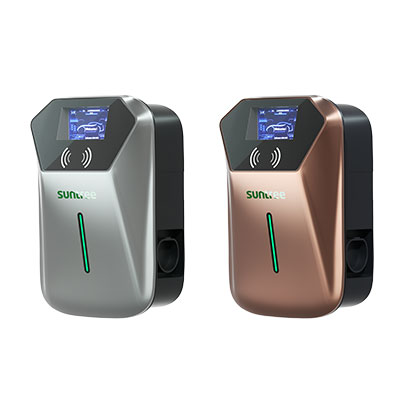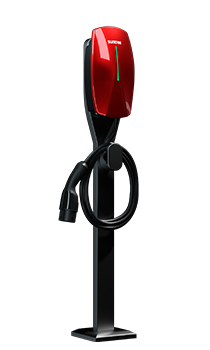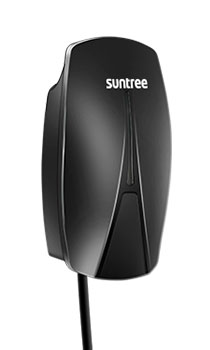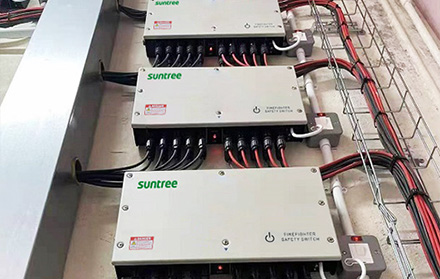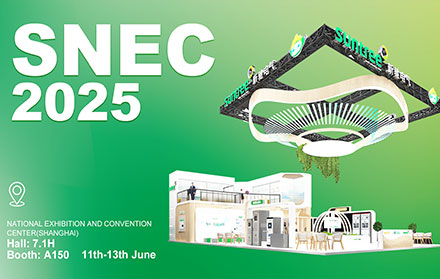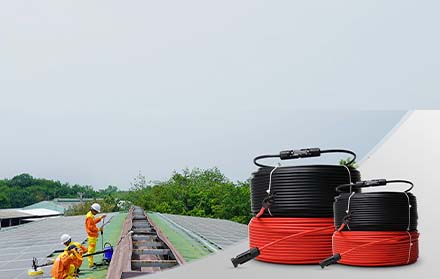Miniature Circuit Breaker (MCB) Symbol, Function, and Applications
Miniature Circuit Breakers (MCBs) are essential components in modern electrical systems, providing reliable protection against overcurrents and short circuits. This article explores the MCB symbol, its working principles, types, and real-world applications.
MCB Symbol in Electrical Diagrams
The MCB symbol in circuit diagrams follows the IEC 60617 standard. It is represented as:
-
Basic Symbol: A rectangle enclosing a switch mechanism, often with a diagonal line indicating the tripping function.
-
Terminal Markings: "1" (Line) and "2" (Load) denote the input and output terminals.
Comparison with Other Breaker Symbols:
-
QF (Circuit Breaker): Similar to MCB but lacks specific miniature design indicators.
-
RCD (Residual Current Device): Includes a test button symbol (Ⓣ) and focuses on leakage current detection.
How Does an MCB Work?
MCBs operate using a dual protection mechanism:
Thermal Protection
-
Detects overloads caused by sustained excessive current (e.g., 125% of rated current).
-
A bimetallic strip bends due to heat, triggering mechanical tripping.
Magnetic Protection
-
Responds to short circuits (sudden high currents, e.g., 3kA–10kA).
-
A solenoid creates a magnetic field that forces instantaneous tripping.
Types of MCBs
MCBs are categorized based on tripping characteristics (IEC 60898 standard):
| Type | Tripping Curve | Application |
|---|---|---|
| Type B | Trips at 3–5× rated current | Residential lighting circuits |
| Type C | Trips at 5–10× rated current | Motor-driven appliances (ACs, refrigerators) |
| Type D | Trips at 10–20× rated current | Industrial machinery with high inrush currents |
Key Applications
-
Residential Wiring: Protects branch circuits for lighting and sockets.
-
Commercial Buildings: Safeguards HVAC systems and elevators.
-
Industrial Panels: Manages power distribution in control cabinets.
MCB vs. RCD: What’s the Difference?
While both are protective devices, their functions differ:
| Feature | MCB | RCD |
|---|---|---|
| Protection | Overcurrent/short circuit | Ground faults/leakage currents |
| Symbol | Rectangular switch | Switch with test button (Ⓣ) |
| Response Time | Milliseconds (magnetic) | 20–30 milliseconds (leakage detection) |
Advantages of MCBs
-
Resettable: Unlike fuses, MCBs can be manually reset after tripping.
-
Compact Design: Ideal for space-constrained panels.
-
Precision: Tailored tripping curves ensure selective coordination.
The electrical symbols for alternating current (AC) and direct current (DC) are as follows:
Alternating current (AC) symbol: usually indicated by a wavy line (~), indicating that the direction and size of the current changes periodically.
Direct current (DC) symbols: usually with a straight line above and a dash (----) below, indicating that the direction of the current is constant.
In addition, there are some commonly used electrical symbols and their meanings:
Fuse (FU): Used to protect circuits from excessive current.
Relay (K): Used to automatically control the switching of a circuit.
Ammeter (PA): Used to measure the amount of current.
Current relay (KA): used to detect changes in current and trigger the corresponding action.
Voltmeter (PV): Used to measure the magnitude of voltage.
Circuit breaker (QF): used to cut off the circuit in case of overload or short circuit.
Disconnect Switch (QS): Used to isolate a power source or part of a circuit for maintenance or testing.
Transformer (T): Used for voltage transformation.
Transformers (TA/TV): used for current and voltage measurement and protection
Leakage circuit breaker symbols and differences are as follows:
AC type Leakage AC type, on the other hand, is a leakage protection device that is sensitive to AC fault current and is mainly used for detecting and preventing electrical fires caused by alternating current.
Working Principle: RCD-AC not only detects the unbalanced current between the fire wire and the zero wire, but also considers the possible fault current between the fire wire and the fire wire. It determines the presence of leakage current by measuring the vector sum of all currents in the circuit. If the vector sum is not zero and exceeds the set value, it indicates the presence of leakage current and the RCD-AC will act to cut off the power supply.
Type A: Leakage Type A is a leakage protection device that is sensitive to sudden single-phase ground fault currents, and is usually used to prevent personal electric shock and fire hazards.
Working Principle: When the leakage current in the circuit exceeds the preset value, RCD-A will quickly cut off the power supply. It mainly detects the unbalanced current between the fire line (phase line) and the zero line, i.e., the current leaking to the ground or other conductors
Type B: Expanding on Type A to smooth DC residual current and recognizing DC residual current generated by rectifier circuits, it covers more complex types of leakage (e.g., superimposed smooth DC or mixed waveforms), and is applicable to Industrial or special equipment (e.g. medical equipment, photovoltaic systems, etc.) that need to cope with smooth DC leakage or complex waveforms
Conclusion
MCBs are indispensable in ensuring electrical safety across residential, commercial, and industrial systems. Understanding their symbol, working principles, and types helps in designing efficient and secure electrical installations.



